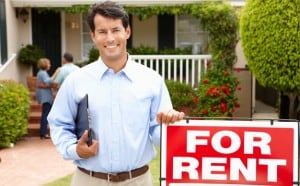How To Value A Rental Property Before You Buy

A Case Study
When I consider a property to purchase, my goal is to provide good shelter for a price that is affordable for a substantial portion of the population. You can determine the investment value of a property based on return on investment or ROI. Let’s look at the ROI of a property I own in Springfield, Ohio.
| Single Family Home | ||
| Purchase Price: | $12,000 | |
| Rehab: | $4,538 | |
| Total Investment | $16,538 | |
| Potential Rent | Monthly | Annually |
| Unit 1 | $565.00 | $6,780.00 |
| Unit 2 | $0.00 | $0.00 |
| Total | $565.00 | $6,780.00 |
| Vacancy Reserve 10% | -$56.50 | -$678.00 |
| Repair Reserve 20% | -$113.00 | -$1,356.00 |
| Insurance: | -$50.00 | -$600.00 |
| Property Taxes: | -$45.00 | -$540.00 |
| Interest Expense | $0.00 | $0.00 |
| Water | $0.00 | $0.00 |
| Trash/$18 Per Unit | $0.00 | $0.00 |
| Mowing/Average Over 12 Months | $0.00 | $0.00 |
| Professional Management 10% | -$56.50 | -$678.00 |
| Total Expenses | -$321.00 | -$3,852.00 |
| Net Profit | $244.00 | $2,928.00 |
| Estimated Appreciation: | 0.00% | |
| Annual Return on Investment: | 17.70% |
This property has averaged a 17% or higher return every year that I have owned it. Only in fairly depressed markets would most investors be able to buy properties that perform this well. When considering any property to buy in Springfield, my goal is to achieve 20% ROI, but I am happy with an average of 15% to 17% after all expenses.
Estimate the potential rent price.
When evaluating a property to purchase, you must first do an analysis based what you think the rental performance will be. This is called a pro forma. Determining market rate rent is fairly easy these days; you can get a good idea by perusing real estate websites. Just be sure that you are comparing rental rates in similar blocks and neighborhoods.
Analyze the data.
You will find a range of rents in this search. The lower rent prices likely indicate a lower-quality unit. The higher may reflect a unit in premium condition. Discard anything well outside the range on either end as outliers, and determine the average asking price of the available units. That should help you come up with a number that is realistic.
Determine what your ROI should be — not what you want it to be.
The second step is to determine your target ROI. In Springfield that target may be 15% to 20%, but realistically in an appreciating market, 10% may be a spectacular return. In a place like Melbourne, Florida, I consider anything over 6% a win. In Melbourne however, market values are still enjoying significant appreciation. The recent appreciation history and near- to medium-term potential (one to three years) has to be considered when you set your ROI targets.
Use real-world numbers.
In the case study above, I calculated my ROI based on the forecasted profit and on the amount of money invested in the property. What is invested in the property is a hard number; there is no estimating involved. My expected profit on the property is based on past performance that should continue in the future. In this case study, we know both sides of the equation and can easily calculate ROI.
Make your final calculations.
It is possible to make a very accurate estimate of the value of a rental property before you buy it. First, estimate the potential rent for a year, and subtract your estimated annual expenses. This number is your projected profit. Then, determine what your return on investment should be. If, for instance, you decide that your minimum acceptable ROI before any appreciation has to be 10%, then you simply take your projected profit and divide it by 0.10. The resulting number will give you your target purchase price. The annual net profit earned on the property in the case study above is $2,928. If you were interested in purchasing this property and wanted to make a 10% return on your money, then you would value the property at $29,280 ($2928 / 0.10 = $29,280).
As an investor, your situation may involve other extenuating circumstances that may impact your ROI, but there is no substitute for understanding your numbers.
Source: forbes.com















 Accessibility
Accessibility